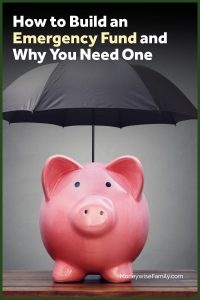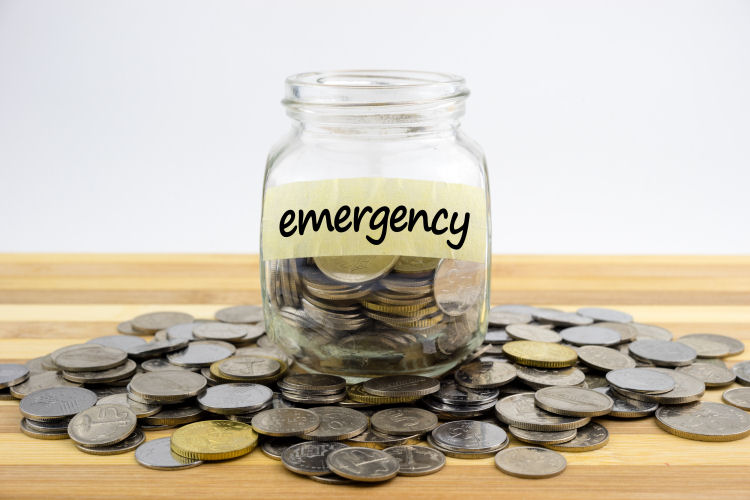What is an emergency fund?
Your emergency fund is your safety net in case you lose your job or get sick. You can use these savings to keep your finances in track for a couple of months.
The money in an emergency fund should be easily reached and stored in a bank account, preferably in a high-interest savings account.
What’s really important is that you should gradually put a certain amount of money away, and only use it for real emergencies.
Building an emergency fund
You can begin by saving small amounts to your emergency fund until you are able to contribute more. Start off with at least $15 a month to your emergency fund. If you are able to save more to the fund do so.
Make several short-term goals for your emergency fund. Once you have saved enough money to pay your bills for one month, pat yourself on the back. Then keep saving until you have enough saved to pay your expenses for 3 to 6 months.
You may not be able to build your emergency fund money together all at once. Think of it as a financial goal and keep saving. If you get a tax refund or other extra money, put it in your emergency fund account.
How much money to save for emergency fund?
That depends, really. What kind of lifestyle do you lead and how much will it costs to maintain that lifestyle if you’re out of work?
Most experts recommend you save a minimum of three months of basic expenses. Figure out your monthly budget, subtract expenses you can live without, then multiply it by the amount of time you think you’ll need the fund to rely on.
Keep in mind, three months contingency money should be an absolute minimum. The more people you support, the more likely you are to have unexpected or unplanned costs. If you’re single and have no dependents, the amount is going to be significantly less than if you’re married and have three kids. The more people you’re financially responsible for, the more money you should plan on socking away in this fund. If you have dependents, save at least six month’s expenses.

Where to put the emergency fund?
Your emergency fund should be stashed somewhere safe and easily accessible. No, not under your mattress. We’re talking an account with liquidity, meaning you can turn that savings into cold, hard cash quickly. Checking accounts, savings accounts or money market accounts are just a few options to look into, though each offer different advantages and disadvantages.
Checking accounts offer little to no interest gain on your savings, and many of them come with monthly fees. Savings accounts are a good option as they can provide a small return on your savings and probably won’t charge a fee, but you may incur a penalty if you withdraw a large amount. A money market account is a viable option as it will probably feature a higher interest yield than both a savings and checking account, but your money might be a little more difficult to get to.
Whatever method of savings you choose, make sure your emergency fund is somewhere where you won’t be tempted to dip into it. Mixing your must-have emergency cash with your “saving for a speedboat” account is probably not the best idea.
What is the best way to invest emergency fund and should you do it?
A substantial part of this emergency fund account should be invested in low risk funds. This ensures that your investment does not lose its value in case you need the money. Also, it should be extremely liquid, to give you access to the cash easily and quickly if you need it.
Having an emergency fund will ensure that you are on the road to becoming financially secure and will prevent you from going into debt when an unexpected tragedy happens or unexpected expenses arises. An emergency fund is the first step to getting out of and staying out of debt.

